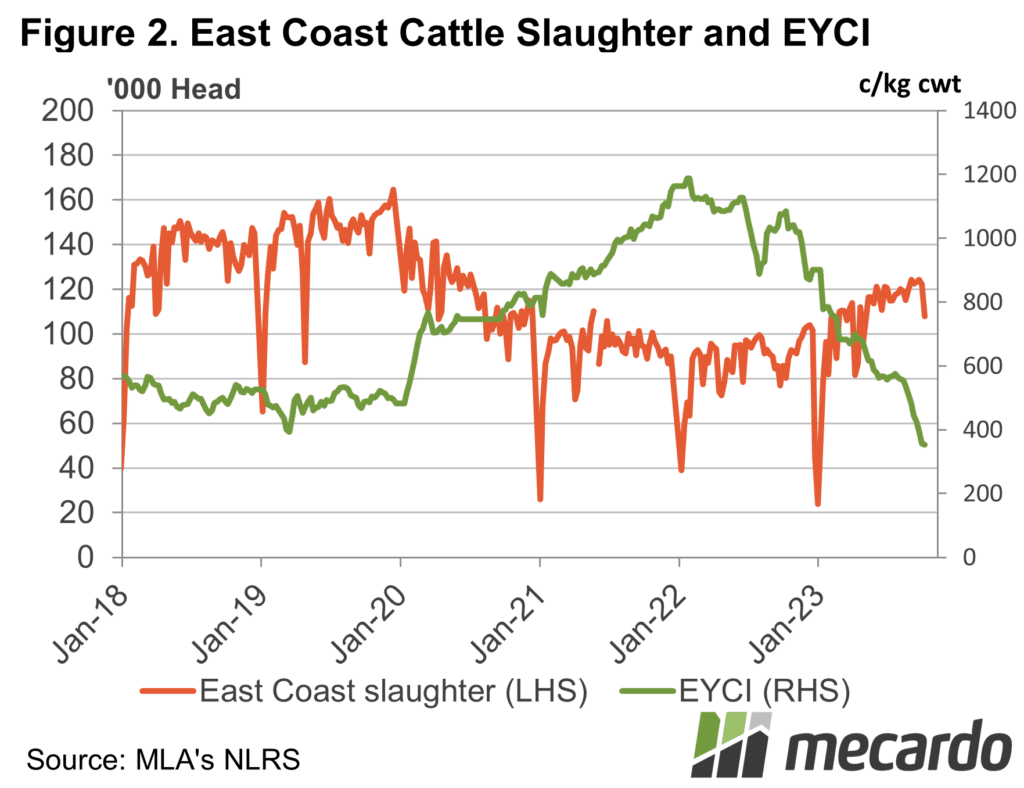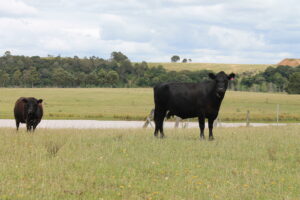Cattle slaughter continues to run hot, sitting way ahead of last year, and now above the five year average. Here we take a look at where slaughter sits in historical terms and how this is relating to prices at saleyard level.
The latest data for cattle slaughter, for the week ending the sixth of
October, shows a large dip in cattle slaughter, but this was due to the public
holiday for the NRL Grand Final.
Queensland and NSW are the two largest cattle processing states, and as
such a public holiday will always affect east coast throughput.
Looking at the six week prior to the public holiday, we can see that
east coast cattle slaughter broke the 120,000 head per week mark for the first
time since mid 2020, and pushed higher than the five year average for the first
time this year.
Looking back a little further, cattle slaughter is still well off the
peaks of 2019 when some weeks saw over 160,000 head processed. For the year to date, east coast cattle
slaughter is up 29% on last year, but is still 23% below 2019.
Figure 2 shows the weird state of the current market. Cattle slaughter is well below 2019, yet the
Eastern Young Cattle Indicator (EYCI) is also weaker than 2019. Supply and demand suggests that if supply is
lower, and prices also lower, we must have weaker demand.
Looking at export beef prices, at least for 90CL beef, prices are
actually stronger than in 2019, and in fact, not far off the peaks seen in
early 2022. With export demand as strong
or stronger than 2019, it brings us back to local demand.
Local demand from restockers, feeders and processors is currently weak
relative to supply. Many restockers have
had a dry winter and spring, or are looking at an El Nino and decreasing
stocking rates, rather than increasing.
Lotfeeders are dealing with weaker finished cattle prices and relatively
strong grain prices.
At the processor level capacity is still constrained by the covid and
tight supply hangover of recent years.
Even if processing margins are good, it is a big commitment to put on
extra shifts to handle extra stock.
What does it mean?
It’s hard to fathom cattle prices lower than the height of the last drought, when export beef prices are better than at that time. It’s another indication of the potential upside when supply and demand even out at a local level. The question is when this will be, which depends on slaughter capacity increasing, and seasons improving. Key periods are December and January, and if not then next winter.
Have any questions or comments?
Key Points
-
· Cattle slaughter is much higher than last year, but well off 2019 peaks.
· The EYCI is lower than 2019, despite lower slaughter rates.
· Demand will improve with increased slaughter capacity and an improved seasonal outlook.
Click on figure to expand
Click on figure to expand
Data sources: MLA, Mecardo














